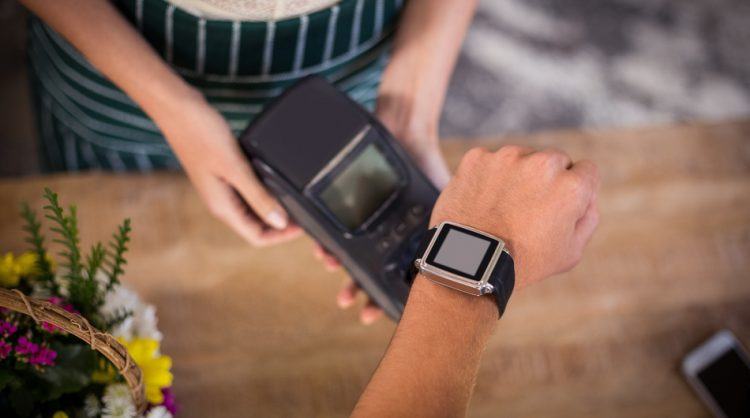
Photo credit: 123rf.
Microsoft’s Satya Nadella and Elon Musk of Tesla may disagree on the power of artificial intelligence, but the emerging technology is fast gaining ground. It is set to launch the smartwatch market into a high growth trajectory, says a report by Counterpoint Research.
It estimates the wearables market, dominated by fitness trackers like Fitbit, to grow 376 percent annually in 2017 to reach 60 million units, on the back of artificial intelligence (AI). Smartwatches only account for about 12 percent of the wearables market in India. This share is estimated to grow to grab 42 percent share in 2017, helped by AI-backed smartwatches, Counterpoint Research states in the report.
“Wearables haven’t seen the expected momentum so far, because they have struggled with effective human-computer interaction. However, the integration of AI into the wearables will change how we interact with our wearables,” says Parv Sharma, research associate at Counterpoint Research.
AI has, till now, been used to track procedures in healthcare or education and then make suggestions on how to stay healthy or how to improve a child’s performance. Now, the time is not far when you can send or reply to messages with just a simple tap, or not at all – thanks to AI.
Silicon Valley tech giant Google clearly sees room to experiment. The company recently announced a base technology that aims to integrate AI into your smartwatch. The technology can be mounted on any watch that runs on Android Wear 2.0 and on Google watches. It can facilitate smart messaging and contextual reply, even with third-party apps. It doesn’t require connection to the cloud or a powerful processor to do so.
“The Android Wear team reached out to us and was interested to know whether it would be possible to deploy this Smart Reply technology directly onto a smart device. Because of the limited computing power and memory on smart devices, we quickly realized that it was not possible to do so. But now we’re quite surprised and excited about how well it works” Sujith Ravi, a staff research scientist at Google, wrote in a blog post.
The technology can compute the nature of an incoming message and respond accordingly, without you having to look at it.
Another global player, the US-based startup Nextbit behind the Robin smartphone, is already using inbuilt AI and machine learning technologies. Panasonic India is also looking at integrating AI and machine learning in its smartphones.
Headway
However, it is India’s startups that are making the real breakthrough in AI-backed wearables. In January, local startup Boltt released a fitness kit that includes a pair of smart shoes, a smart band, and health and training apps powered by AI.
It already has a competitor in the Sandfox smartwatch, which was also released this January. The Sandfox founders are so confident about the AI capability of the device that they claim it is better than Apple’s Siri, or even Microsoft’s Cortana.
Like Siri, Sandfox’s integrated AI also has a name – Silvia – which is hungry to learn and grasps all her interactions with humans, growing smarter and more efficient with every voice command. Silvia can also grasp natural speaking patterns such as tone, mood, and accent.
Another India-based startup, Hug Innovations, has created a smartwatch with added functionalities for heart rate monitoring. While heart rate monitoring is currently available in devices such as iPhones, Apple Watch, and Fitbit, it is not predictive in nature. At best, such devices use sensors to capture the heart rate.
Through the use of artificial intelligence and machine learning algorithms, Hug’s watches go a step further. Forget the electrocardiogram (ECG): the Hug watch can monitor and alert the user if there is an abnormality in the heart rate. The Hug watch also connects to other Bluetooth-supported devices such as speakers to communicate through voice command.
“Smart watches will continue to experience growth, while the Apple Watch loses market share to fitness watch vendors. We expect 2017 to be another lackluster year in general for the Apple Watch 2, with most users waiting for the connected watch,” research firm Tractica says. Apple’s market share in wearables dropped to 40 percent in Q3 of 2016, from over 70 percent in the previous year.
Apple is likely to announce a connected Apple Watch in 2017 that does not require tethering with an iPhone. “Real-time artificial intelligence (AI)-based voice coaching with AirPods and Apple Watch is where this is going,” the report added.
“With AI integration in wearables, we are entering the ‘wearable 2.0’ era. Furthermore, the growth for this category will be driven by the proliferation of Amazon’s Alexa into third party hardware from smartwatches such as Martian and hearables [smart audio devices] such as the ONvocal,” says Counterpoint analyst Karn Chauhan.
“It is a natural path for other competitors to integrate their AI solutions across their own as well as third-party wearables,” he adds.
This post AI may kickstart the declining smartwatch market in India in 2017: report appeared first on Tech in Asia.